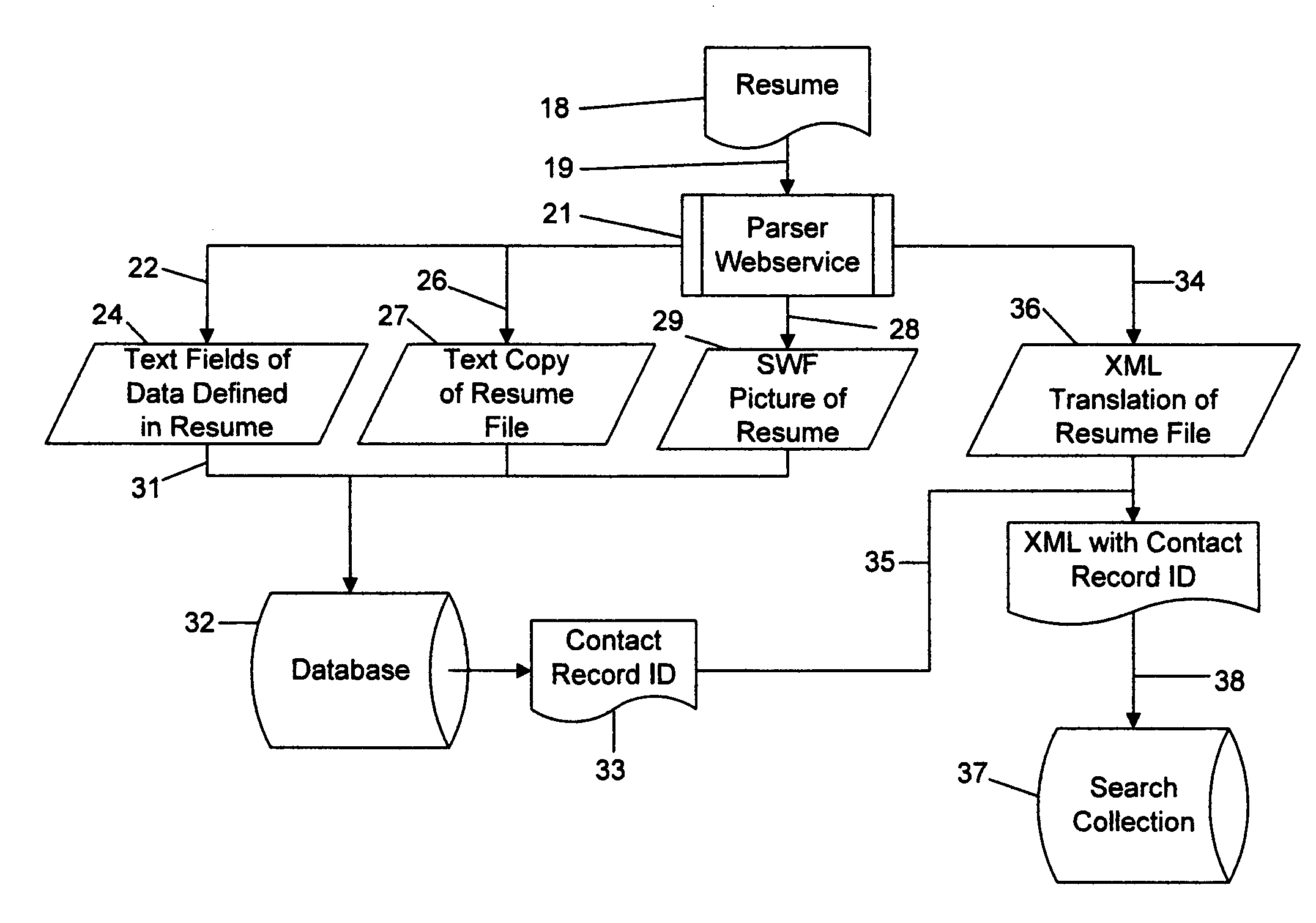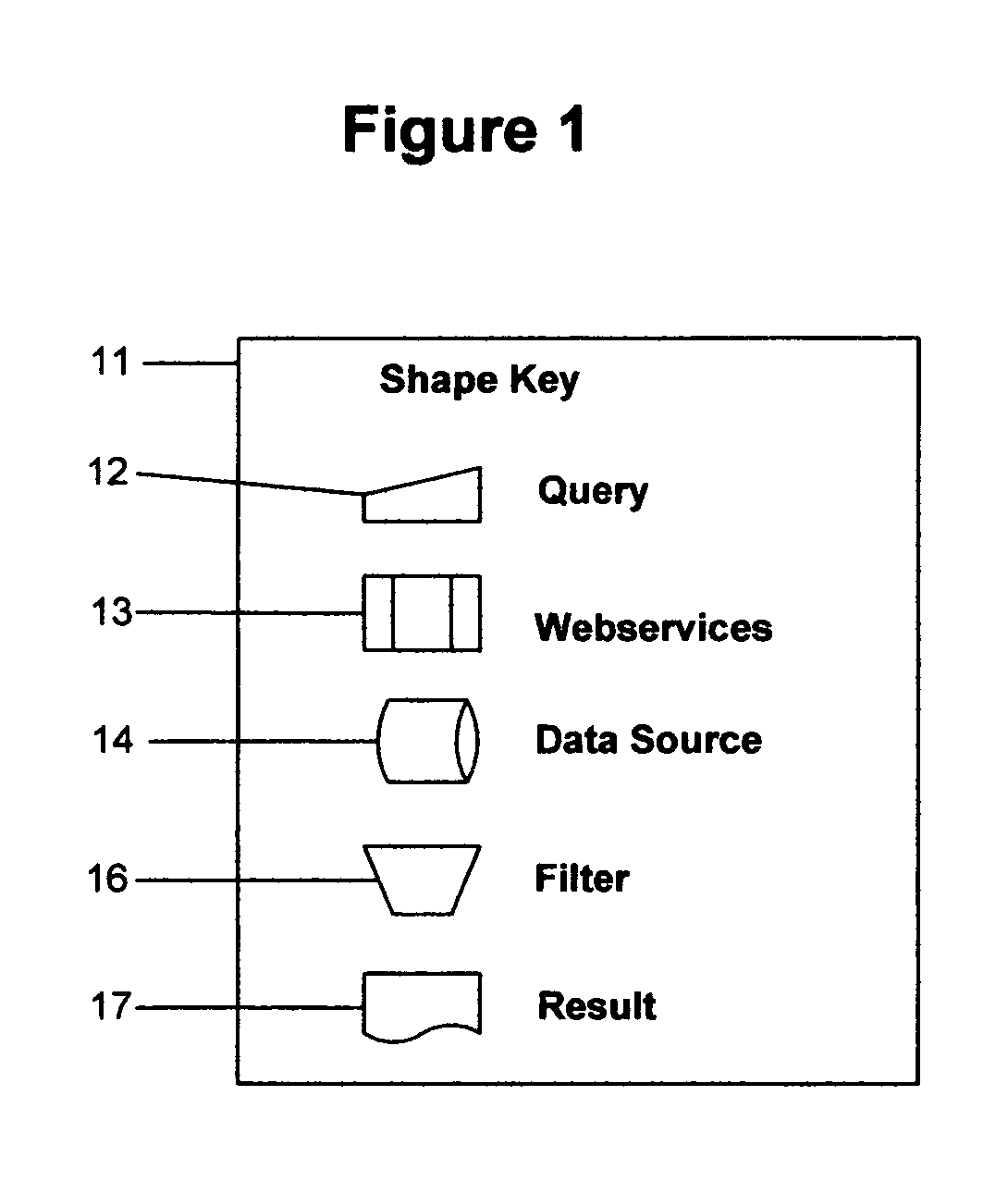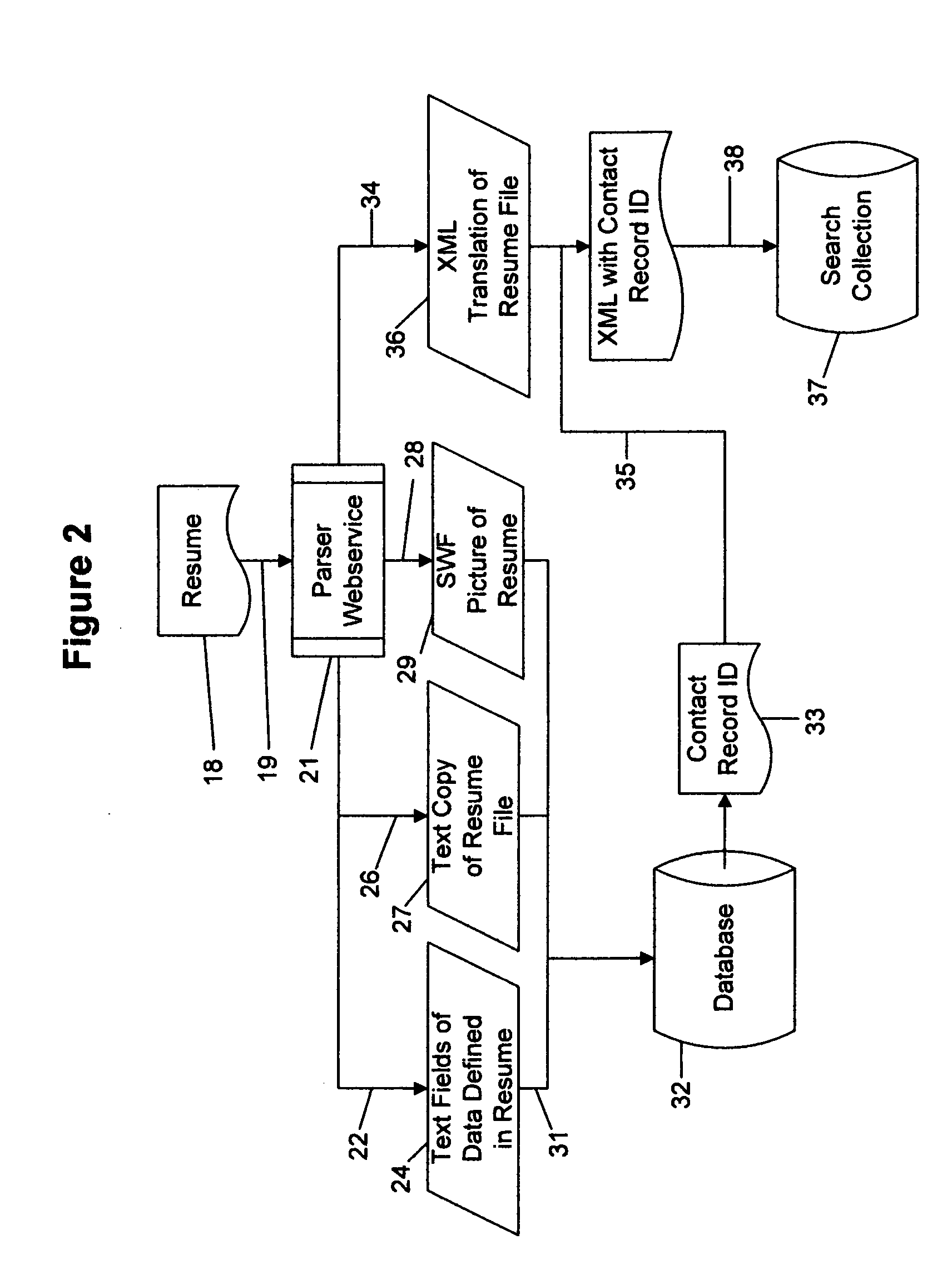Method of transforming resume and job order data into evaluation of qualified, available candidates
a technology of job order data and resume, applied in the field of computer-aided analysis of job applicants, can solve the problems of inefficient data base searches for large amounts of data, difficult resume searching, and inability to dynamically alter data in the search collection
- Summary
- Abstract
- Description
- Claims
- Application Information
AI Technical Summary
Benefits of technology
Problems solved by technology
Method used
Image
Examples
Embodiment Construction
[0018]The shapes used in the drawings indicate the function performed by elements having each shape. Referring to FIG. 1, shape key 11 indicates five different functions. Shape 12 is a rectangle with a sloped upper border indicating a query or request. Shape 13 is a rectangle with a square inside, indicating a webservice element. Cylinder 14 indicates a data source. Trapezoid 16 indicates a filtering process. Shape 17 is a rectangle with a bottom line like a sine wave, indicating a result of a step.
[0019]FIG. 2 illustrates the parsing process for preparing database representations of a resume combined with a search collection record of the resume in XML. Resume 18 is the result of the candidate's assessment of his or her qualifications. Step19 is feeding the resume to a webservice parser 21. The parser 21 transforms the resume into three different forms for analysis in a database. Step 22 transforms resume 18 into text fields 24 using a CRM program. Step 26 transforms resume 18 into...
PUM
 Login to View More
Login to View More Abstract
Description
Claims
Application Information
 Login to View More
Login to View More - R&D
- Intellectual Property
- Life Sciences
- Materials
- Tech Scout
- Unparalleled Data Quality
- Higher Quality Content
- 60% Fewer Hallucinations
Browse by: Latest US Patents, China's latest patents, Technical Efficacy Thesaurus, Application Domain, Technology Topic, Popular Technical Reports.
© 2025 PatSnap. All rights reserved.Legal|Privacy policy|Modern Slavery Act Transparency Statement|Sitemap|About US| Contact US: help@patsnap.com



